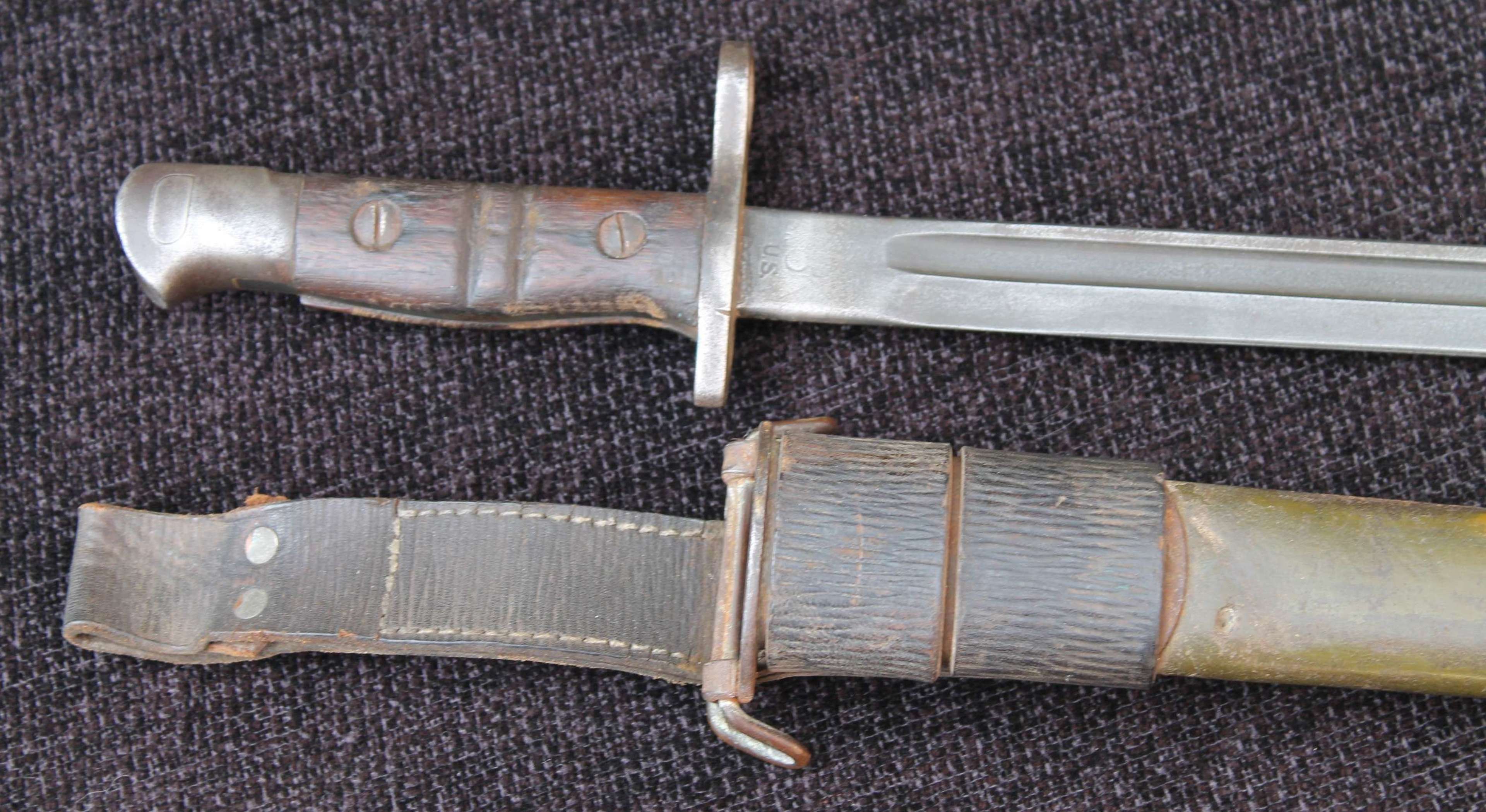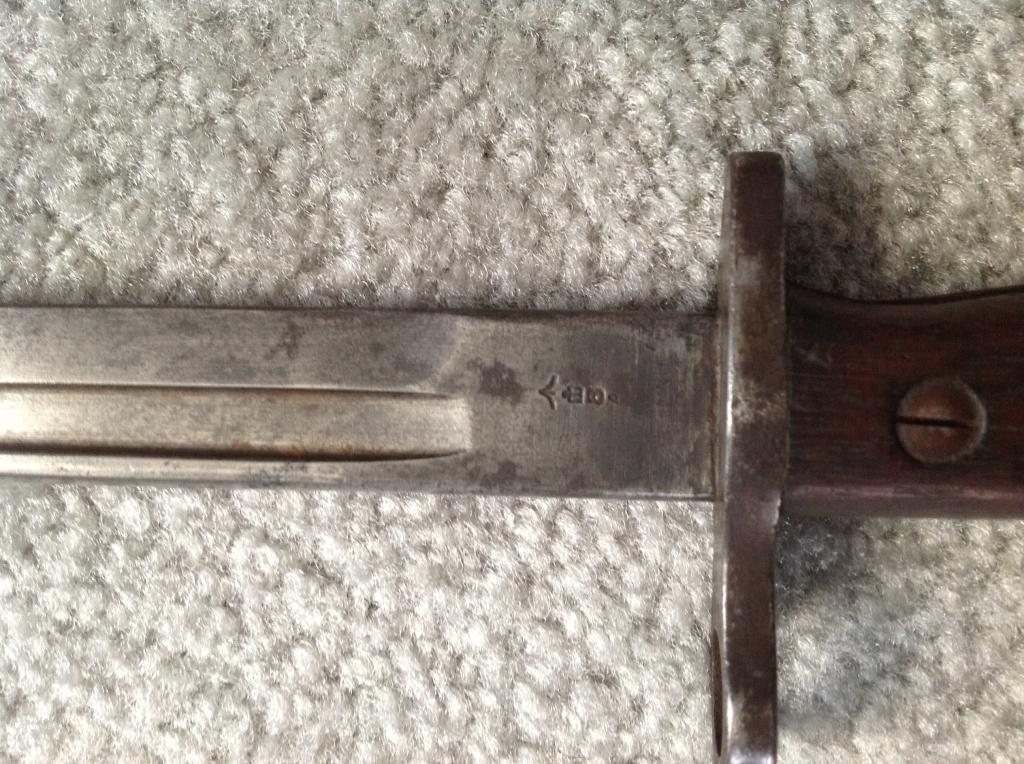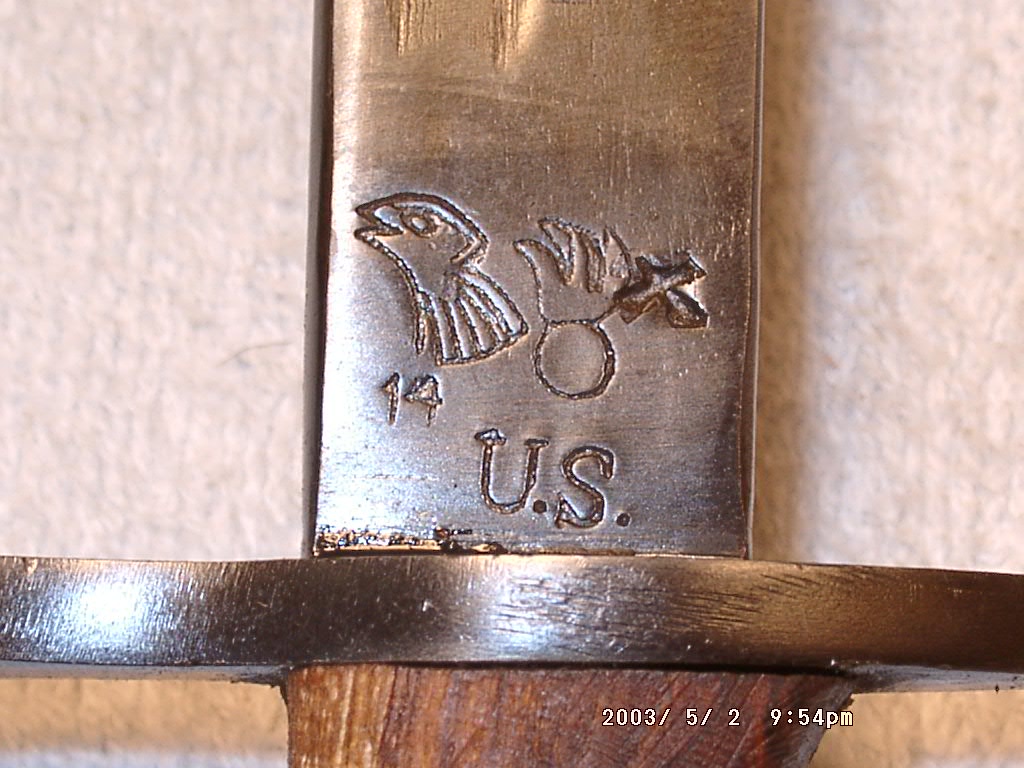

This then makes collecting the M1905 bayonet so appealing to collectors. The second marking would be a manufacturer’s modification mark. This means there could actually be 2 different manufacturer marks on the blade, even though in reality, only one manufacturer actually produced it. What makes it really interesting is the “cut down” versions usually include the manufacture that made the modification. The fuller or blood line that runs down the blade goes all the way to the point. They are easily recognizable from their M1 bothers by the fact that the points are usually a “spear point” bayonet style like the original bayonet or a knife or chisel point style. Both can be clearly identified by the fuller (blood groove) continuing through to the point of the blade. The “Beak”, “Knife”, “Chisel” or “Bowie” modifications are most commonly referred to as the M1905E, while the “Spear Point” is most commonly referred to as the M1905E1. These ground down M1905 Bayonets are often referred to as M1905E or M1905E1. In addition, most of the longer M1905 16″ blades in service would be ground down to 10″. This new bayonet would essentially be the same overall design as the M1905, but only have a 10″ blade. In its place would come what is referred to as the M1 bayonet. In 1943, the War Department decided that they no longer wanted to use the 16″ bayonets, so production ceased. What also seems to be really valuable are the scabbards, these seem sometimes to be worth more than the bayonets themselves.

Most collectable 1905 bayonets will have early manufacture dates, include bright blades with blue strips near hilt.
#M1917 BAYONET MARKINGS SERIAL NUMBERS#
I believe these may have been produced prior to 1906, since this was the first year serial numbers were used. There have been know to be a few of these bayonets without date stamps floating around. Every 1905 bayonet had the manufactured date stamped on the bayonet. The last manufacture date for the 1905 Rock Island bayonet was 1919.

The last manufacture date for the 1905 Springfield bayonet was 1922. These newer bayonets would sometimes be referred to as M1942, that being the year they were made, but in reality they were still M1905 bayonets with just a modification to the hand grips.īelow are known Serial Numbers for the 1905 SA and 1905 RIA known serial numbers for the years 1906 – 1922. The new bayonets would be produced with bakelite (plastic) black or sometimes brown hand grips. During World War 2 production resumed again. After 1918-1922 the blades were Parkerized (phosphate anti-corrosive finish) and Blued and the grips were made from black walnut. These were 16″ blades and which included a wooden had grip. Early versions (up until 1918) of the M1905 bayonet had what is referred to as bright, bare metal blades. It was originally designed to fit the M1903 Springfield Rifle.


 0 kommentar(er)
0 kommentar(er)
